New launch offer:
enjoy unlimited eco-scoring & users for a limited time, automatically included in all plans.
Manage, reduce, and report your company's environmental impact by tracking it on an easy-to-navigate dashboard.
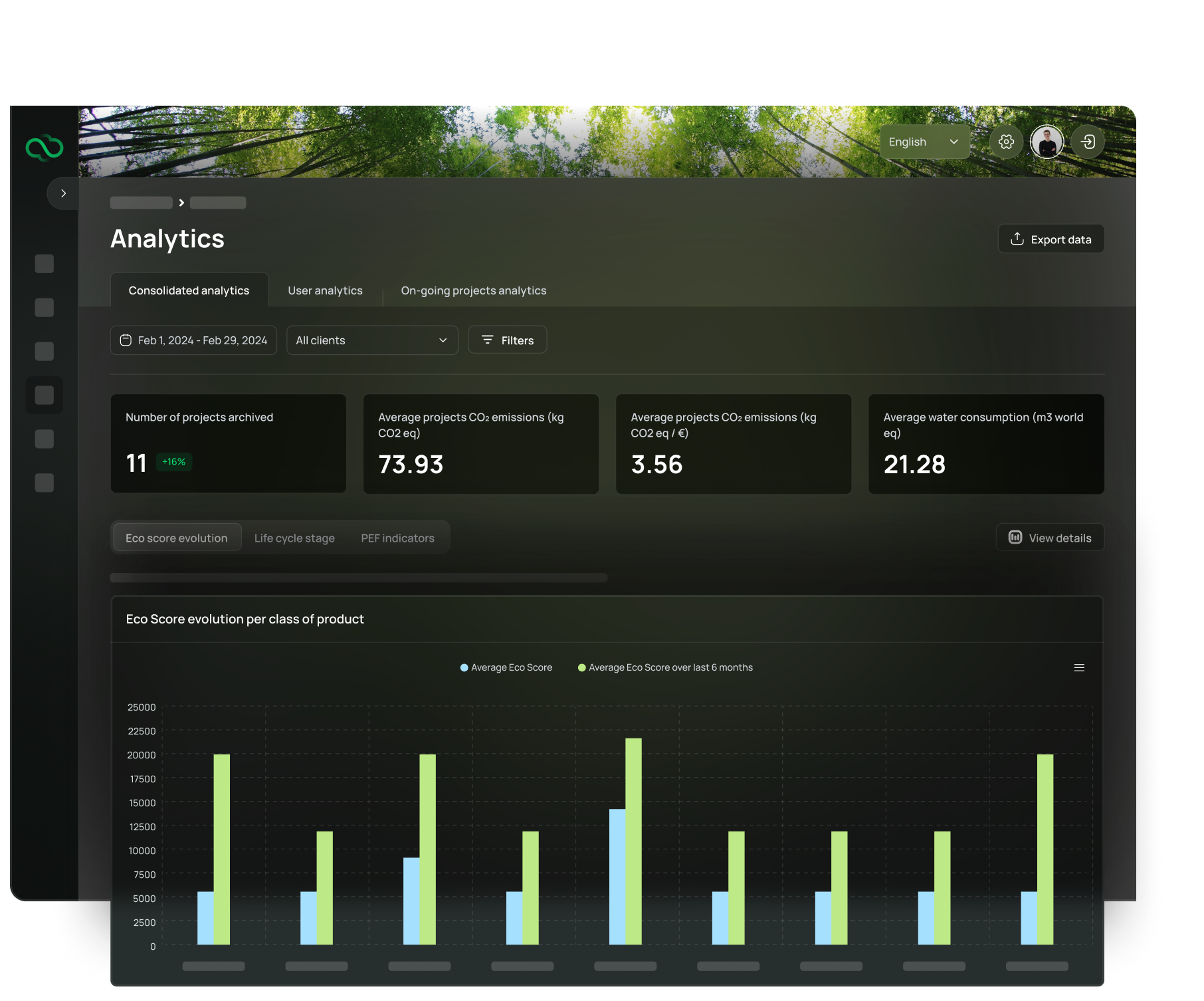
Provide trusted sustainability compliance reporting relevant to European Union regulatory & Corporate Sustainability Reporting Directive - CSRD, based on ISO standards of environmental footprint assessment.
Account and report all the impacts of your value chain, based on Corporate Value Chain Scope 3, to ensure the availability and quality of data from your company's ecosystem, whether it's a complex supply chain or an extended product value chain.
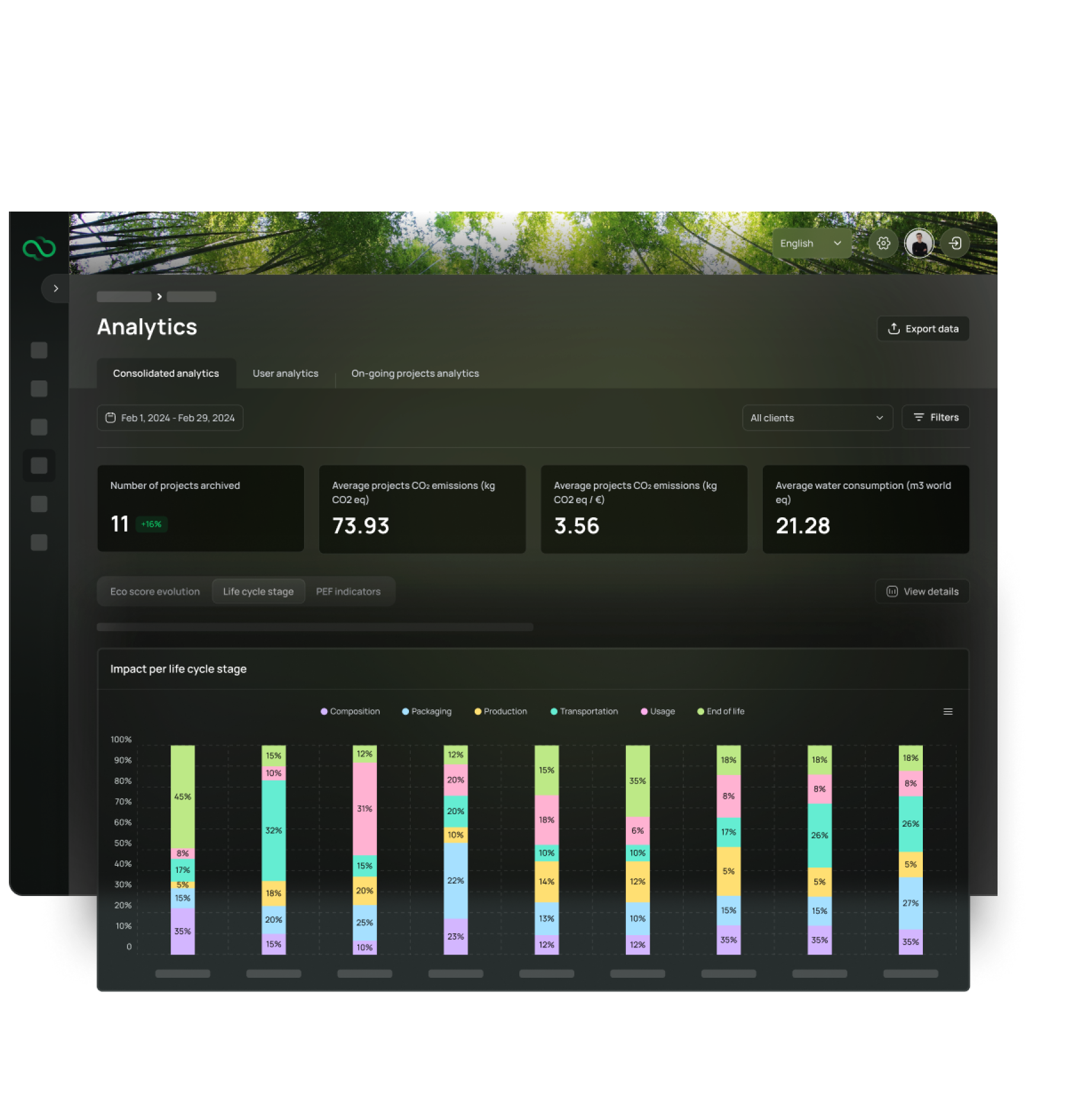
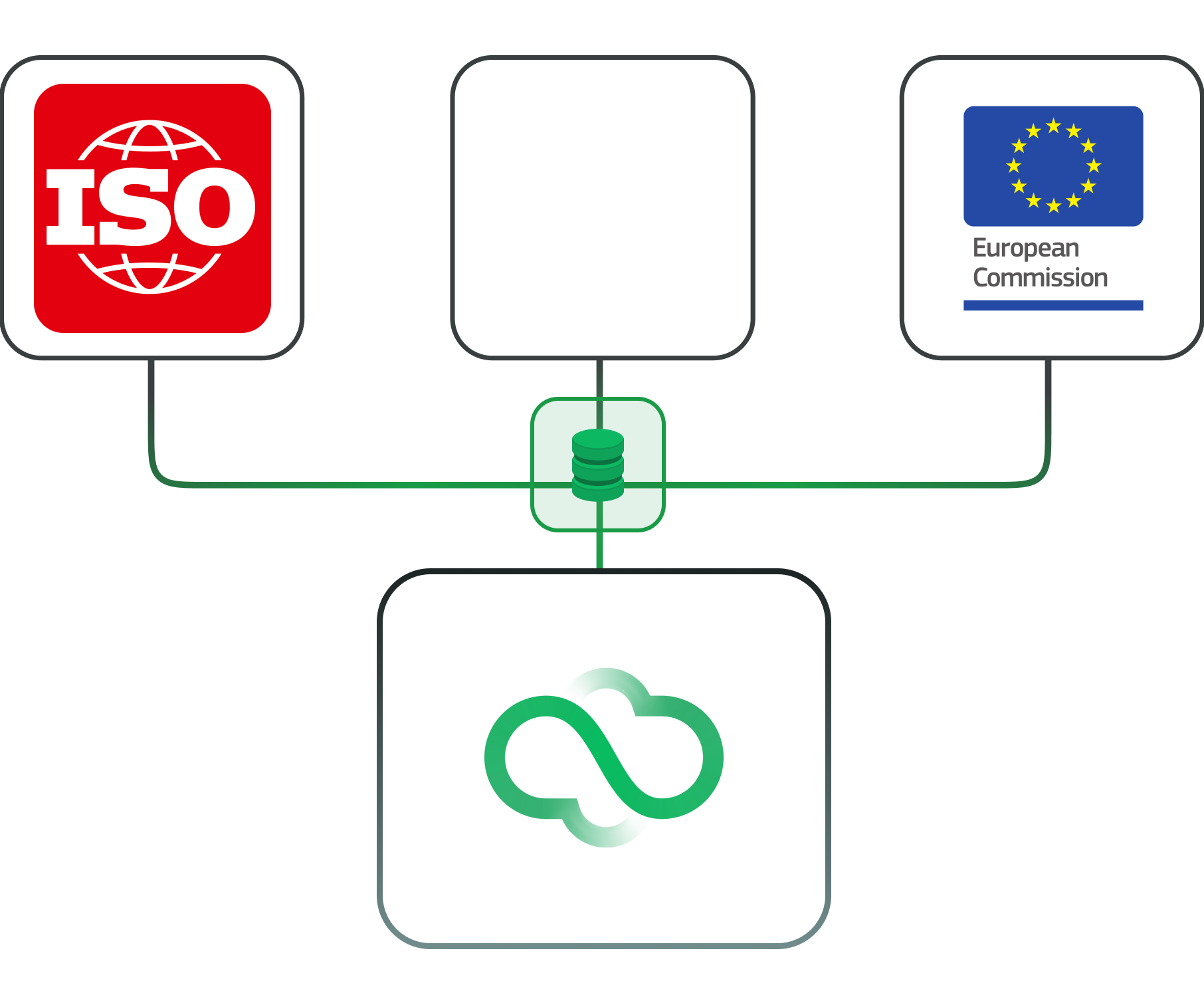
EcoDesignCloud integrates a variety of data sources, ISO-aligned & PEF methods to ensure efficiency and compliance. Based on a user-friendly interface and a Product-LCA eco-scoring engine, we undertake harmonization procedures by compiling data from environmental databases, and using international standards, to give you complete mastery over your corporate statements.
Using streamlined workflows with your ecosystem, EcoDesignCloud centralizes all your company's footprints and makes all your ecosystem emissions available in your sustainability dashboard, and scaled with precise metrics to enable your teams to monitor your value chain performance.
Backed by scientific method throughout a product's life cycle & defined on international norms ISO 14040 & 14044.
Access corporate-compliant environmental disclosure requirements according to the Corporate Sustainability Reporting Directive (CSRD).
According to the European Commission's PEF standard on environmental labeling, we analysize at product-level and provide measurements for 16 impact categories.
Adapt your business model to environmental challenges by empowering your teams to collect, measure and monitor all necessary information and data on upstream and downstream supply chain emissions, enabling you to drive full accountability for sustainability.

All-in-one tool to simplify the complexities of managing sustainable practices, making it easier than ever to achieve your environmental goals.
Monitor your environmental impact with an overview on upstream and downstream of your product manufacturing supply chain, using real-time metric visualization.
Centralize assessments of 16 emissions factors to easily track, communicate and disclose the clear and transparent results of your sourcing over time.
Hepl your teams to achieve Scope 3 screening by interacting with your suppliers and clients with easy-to-use workflows to synchronize data collection, gaining valuable insights and required information.
Get a visibility on your baseline, explore opportunities and make informed decisions by easily visualizing your company's reporting.
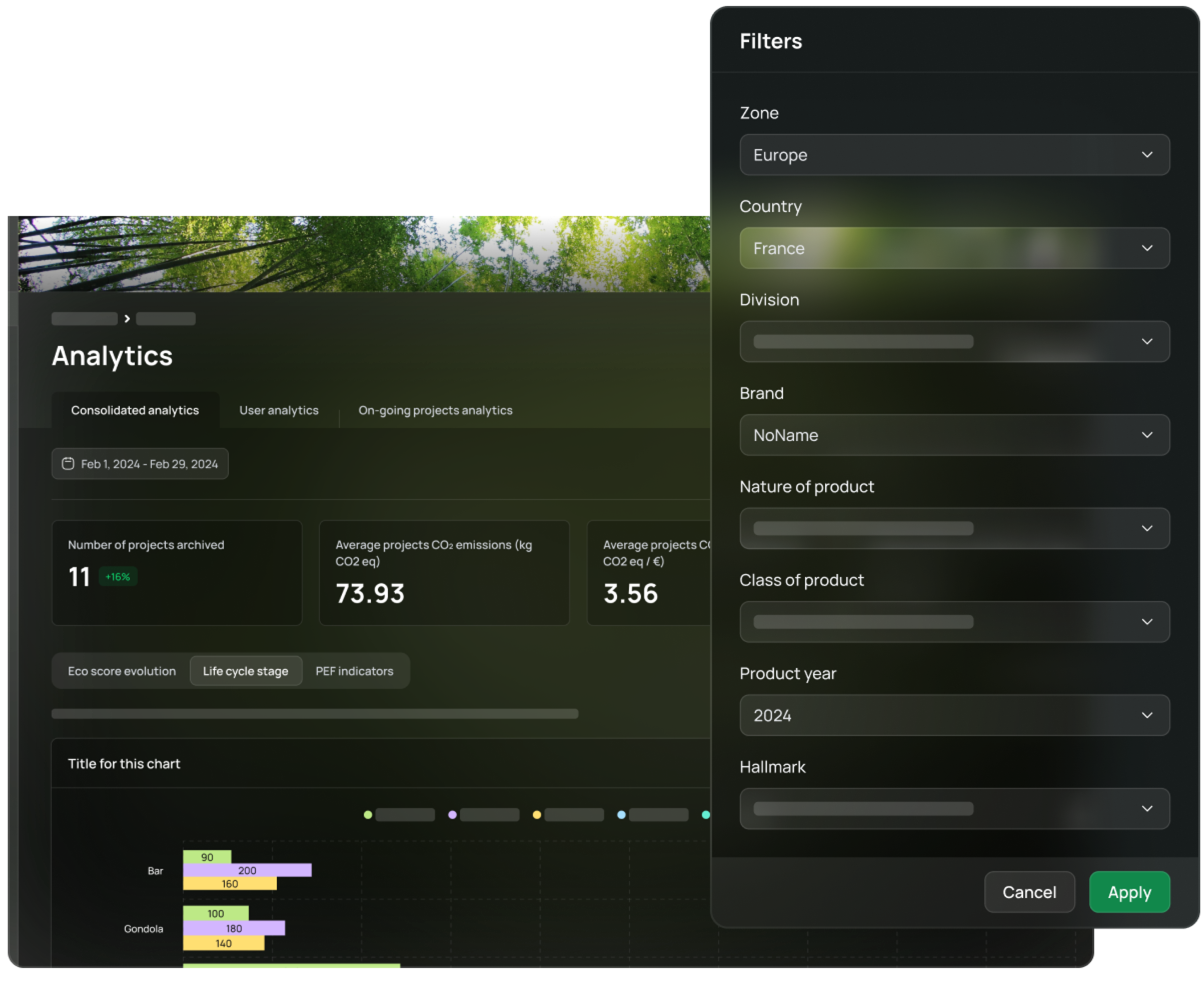

EcoDesignCloud is equipped to automate interactive dashboards and data conversion logic based on the impacts of your company's activities, enabling materiality footprint results to be established through a single digital, and transparent reporting tool.
Ensure the consistency of reliable sustainability data, without costly and time-consuming processes.
Obtain data at the level of detail that you require for standardized reporting of your your materiality footprint of scope 3, aligned with European Union PEF methodology & CSRD. Ensure the accuracy and reliability of your company's value chain procurement and outsorcouing claims.
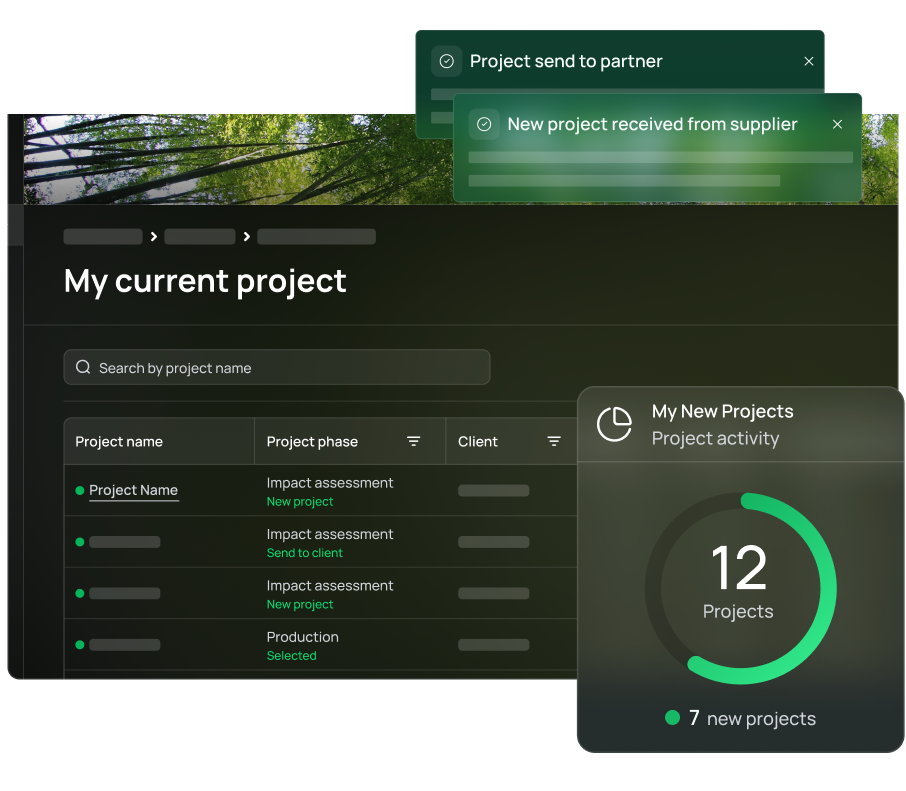
EcoDesignCloud is a materiality footprint toolset to overcome challenges of environmental management. Built on a robust ISO-normed Life Cycle Assessment for sensitivity analysis, it automates the quantification of 16 product footprint indicators aligned with EU taxonomy and scale LCAs to help you gain materiality reporting of your company’s environmental impacts.

EcoDesignCloud was built to follow CSRD standardized framework and to provide sustainability information for corporate disclosure. Obtain the required metrics for European Sustainability Reporting Standards (ESRS).
Get materiality footprint data at corporate level, set target, and reduce risk management of environmental impacts while using the same tool to centralize your reporting obligations.
Simplify data points collection across teams, clients & suppliers.
Futur-proof your sustainability management by calculating your emissions following the latest scientific standards and to be aligned with upcoming regulations.
Corporate Sustainability Reporting Directive (CSRD) is a European regulation against green washing and towards standardized and comparable ESG Reporting. It is a set of policies by the European Commission with main goal of reaching climate neutrality by 2050.
The Corporate Sustainability Reporting Directive was set effective by the European Commission at the beginning of 2024 and introduces a setting of new guidelines for sustainability. This ruling is aimed at enhancing and standardizing sustainability disclosures among large companies operating in the European Union.
By applying uniform rules to large European companies and non-EU groups, the framework helps level the playing field against competitors from regions where environmental and human rights violations may be tolerated.
The CSRD applies to companies with more than 250 employees, a balance sheet total of €20 million or sales of €40 million. Companies falling under these obligations (and other additional conditions for other categories of business - which are being progressively phased in) must adhere to the new standards, which encompass a variety of sustainability factors.
According to the European Commission, consumers now adays have a hard time making sense of the many environmental labels and claims one can find on products and services. In fact, they showed that:
· 53% of the green claims are misleading or simply vague
· 40% have no supporting evidence
· 50% of green labels have a inadequate or non-existing verification
With a proposal for new legislation on these “green claims”, the EU is taking steps to fight against greenwashing and protect both consumers and the environment. This can ensure that environmental labels and claims are credible and trustworthy, and therefore consumers can make more informed purchasing decisions.
The European Commission published FAQ guidelines for taxonomy-eligible reporting.
Companies began implementing environmental objectives 3-6 of the EU Taxonomy Regulation.
Key points of the EU standards on sustainability reporting were published.
Initial realization of the CSRD, SFDR, and EU Taxonomy for capital markets-oriented companies and financial service providers commenced.
Full implementation of the CSRD and EU Taxonomy for all large corporations based on the financial year 2023.
The CSRD and EU Taxonomy will apply to all SMEs on a regulated market in the EU, starting from the 2026 fiscal year.
Empower your teams to ecodesign products and measure all necessary environmental data, enabling to fully report product sustainability with Product Environmental Footprint (PEF) method, ISO-aligned LCAs, and adapt your product development with responsible practices.

Product Environmental Footprint Methodology Recommended by the European Union
The Product Environmental Footprint (PEF) is an initiative by the European Union designed to standardize the calculations for assessing the environmental impacts of products throughout their life cycles.
The EU's primary objectives are to:
-Measure the environmental performance of products accurately.
-Facilitate effective communication regarding environmental impacts.
The EU's Environmental Footprint methods (EF methods) are currently the most reliable, comparable, and verifiable means of assessing the genuine environmental footprint of a product or organization.
These methods encompass 16 environmental impacts, including climate change and impacts related to water, air, resources, land use, and toxicity. General methods are supplemented by product- or organization-specific calculation rules, allowing for the comparison of environmental performances between similar products and companies operating in comparable sectors.
ISO-Standards of Life Cycle Assessment (LCA)
The LCA method is central to sustainability management, as defined by international standards ISO 14040 & 14044. Life Cycle Assessment is globally recognized for measuring ecological footprints and supporting sustainable development commitments, net-zero journeys, and Science-Based Target initiatives (SBTi).
By using a scientific method directly based on "Cradle-to-Grave" or "Cradle-to-Gate" Life Cycle Assessment projects, you can build your company's sustainable product portfolio and seize opportunities with eco-designed products.
This approach ensures strategic environmental competitiveness for business growth and aligns with EU regulations and policies.
Transparency and Compliance with European standards
As businesses navigate the complexities of modern sustainability demands, the CSRD, ESRS, and EU Taxonomy serve as pillars enhancing transparency, reliability, and comparability in sustainability reporting. These frameworks mandate rigorous double materiality assessments and foster stakeholder engagement, ensuring companies not only comply with regulations but also integrate sustainability into their core operations.
Together, these initiatives provide a solid foundation for sustainable investment, aiding the EU's journey towards climate neutrality and environmental sustainability, ultimately benefiting businesses, society, and the planet.
The connection between the Corporate Sustainability Reporting Directive (CSRD) and the EU Taxonomy lies in their shared goal of promoting transparency and accountability in sustainable finance. The EU Taxonomy provides a classification system for environmentally sustainable economic activities, while the CSRD mandates comprehensive sustainability reporting for companies.
Under the CSRD, companies are required to disclose how their activities align with the EU Taxonomy, ensuring that their sustainability reports are consistent and comparable. This alignment helps investors make informed decisions and supports the transition to a sustainable economy.
The EU framework is designed to assist companies in identifying critical impacts, risks, and opportunities to better manage their climate transition and human rights issues, including those in their value chain. Effective sustainability reporting is crucial for transforming the EU economy towards a sustainable and resource-efficient model, providing essential information to financial institutions, guiding companies, and opening access to sustainable finance opportunities.
When fully implemented, the ESRS framework will give European companies a competitive edge. However, adopting the EU reporting rules requires substantial changes within companies, including the absorption of detailed technical regulations and the development of robust ESG management systems, often from scratch.
Implementing these standards is essential for achieving a timely and orderly transition to a sustainable economy. Without adequate sustainability information from companies, public and private investments will be misallocated, severely undermining the EU economy's ability to meet climate and nature objectives globally.
The initial step in a company's sustainability reporting is conducting a materiality assessment. According to the general requirements in ESRS 1:
-Companies must report on sustainability matters based on the double materiality principle, encompassing both impact materiality and financial materiality.
-Conducting a materiality assessment is crucial to identify the significant impacts, risks, and opportunities that need to be reported.
The ESRS requires companies to disclose a comprehensive overview of their material impacts, risks, and opportunities. Subsequently, companies should comply with the ESRS disclosure requirements pertinent to their material matters and provide additional entity-specific information as necessary.
The ESRS mandates requirements for the scope of materiality assessments, including the range of sustainability matters to be considered, boundaries, and value chain coverage. It also sets specific criteria for evaluating the materiality of impacts, risks, and opportunities and includes disclosure requirements for the materiality assessment process and its results.
Comprehensive Double Sustainability Reporting
Double materiality is a requirement for companies to be adopted, it is a comprehensive reporting approach considering two critical dimensions: the impact of their business activities on the environment and society, and the effect of environmental and social factors on their financial health.
This dual perspective ensures that companies are not only evaluating their contributions to sustainability but also recognizing how these issues can influence their financial performance.
By integrating these aspects, companies can offer more transparent, relevant, and reliable information to stakeholders, aiding informed decision-making and promoting sustainable business practices.
ESG Conformity & Transparency
Adhering to the Corporate Sustainability Reporting Directive (CSRD) enables companies to produce more reliable and actionable sustainability reports.
By following the stringent standards and requirements of the CSRD, companies can deliver transparent and consistent ESG information. This boosts the credibility of their reports, facilitates better decision-making for stakeholders, and drives more effective and impactful sustainability strategies.

"This level of transparency and cooperation can also open up new avenues for innovation".

Antoine Vanlaeys,
Chief Operations Officer,

"We envision this innovation will be widely adopted by the ecosystem as the new norm for the future of luxury retail".

Cyril Chapuy,
President, L’Oréal Luxe

"The EcoDesignCloud tool is a step towards more efficient and accurate environmental impact data-sharing between clients and suppliers".

Mathieu Parfait,
CSR Director at Diam
Ensures regulatory compliance of Corporate Sustainability Reporting Directive (CSRD) with materiality footprint at company level, while building your transition by reporting environmental impacts across scopes, subsidiaries, clients, and business activities.